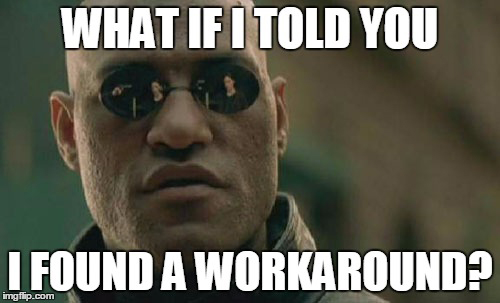Confessions of a CTO Lurker
 Probably like any other founder/CTO in a startup, my day consists of a huge variety of things — meeting with technology partners, going to on-site visits with customers, designing products, engineering, speaking at events… the list goes on. I’ve discovered that one of my “hidden” jobs is at least as important as these other things and it’s been paying off. This job isn’t at the forefront of my job title; my board and management team hardly notice I’m doing it — but I’d recommend the same to any CTO, product manager or founder. So here’s the confession: I spend at least 1-2 hours a day “lurking” on our technical support boards and emails.
Probably like any other founder/CTO in a startup, my day consists of a huge variety of things — meeting with technology partners, going to on-site visits with customers, designing products, engineering, speaking at events… the list goes on. I’ve discovered that one of my “hidden” jobs is at least as important as these other things and it’s been paying off. This job isn’t at the forefront of my job title; my board and management team hardly notice I’m doing it — but I’d recommend the same to any CTO, product manager or founder. So here’s the confession: I spend at least 1-2 hours a day “lurking” on our technical support boards and emails.
As I get my first cup of coffee in the morning I’ll skim our support email subject headers, I’ll check-in again at lunch reading support email chains, and I’ll typically take another look at the queue before I shut my laptop at night. Why? Because this is the unfiltered, raw and real-time pulse of your customers’ relationship with your products. You can find important data here about key business and technology decisions like: Where does the roadmap need to go? Are there user-experience “gotchas” that need to be explored? Are there ways to improve ease-of-deployment on the customer network?
 I’ve chimed in on several email chains, directly interacting with customers on questions they’ve had about the product. These interactions can quickly become a valuable dialog about how the product is being used. Directly supporting our resellers and customers gives me a visceral view of what is loved and not-so-loved about the product. It’s how we close the loop from customer feedback to software updates quickly.
I’ve chimed in on several email chains, directly interacting with customers on questions they’ve had about the product. These interactions can quickly become a valuable dialog about how the product is being used. Directly supporting our resellers and customers gives me a visceral view of what is loved and not-so-loved about the product. It’s how we close the loop from customer feedback to software updates quickly.
Here are the types of things I’ve been able to learn:
Customers that are using a “workaround” for a feature that isn’t immediately obvious. Gentle modifications to the user experience can create a better on-ramp to the feature without users becoming frustrated.
New uses that were not contemplated in design. Design for function and design-first thinking is a big part of Mersive’s culture. When we hear about a killer new use for Solstice (e.g., an interactive wall in a student center for open events), we want to embrace those uses in the next design iteration.
Integration and Deployment Challenges. Our software lives alongside other, sometimes complex, systems on large networks. Installing, maintaining, and managing infrastructural software may not be sexy, but it is very important. I’ve uncovered places where we can support room-control systems, enhance the operational view of Solstice on the network, and improve security — all in discussions that started in our support queue.
These are all great examples of outcomes that resulted from being a lurker in support, so is lurking the support pipeline fun? No, not always. Founders tend to take things personally (It is personal, isn’t it?), and can sometimes avoid areas of the company where input can be brutal and honest. It takes discipline, but in my opinion, it’s well worth the emotional beating it can be. I’d like to think our customers agree.





